Emily-Kriste Wilcox makes slab-built vessels which she describes as ‘paintings in clay’. Her palette is drawn from British landscapes with the verdant greens of hills and gardens, and seascapes with coastal and sky blues pleasing the eye. She reveals how she brings the outside in.
Her work is featuring in our bi-monthly display so we took the opportunity to ask her some questions about her inspiration and process.
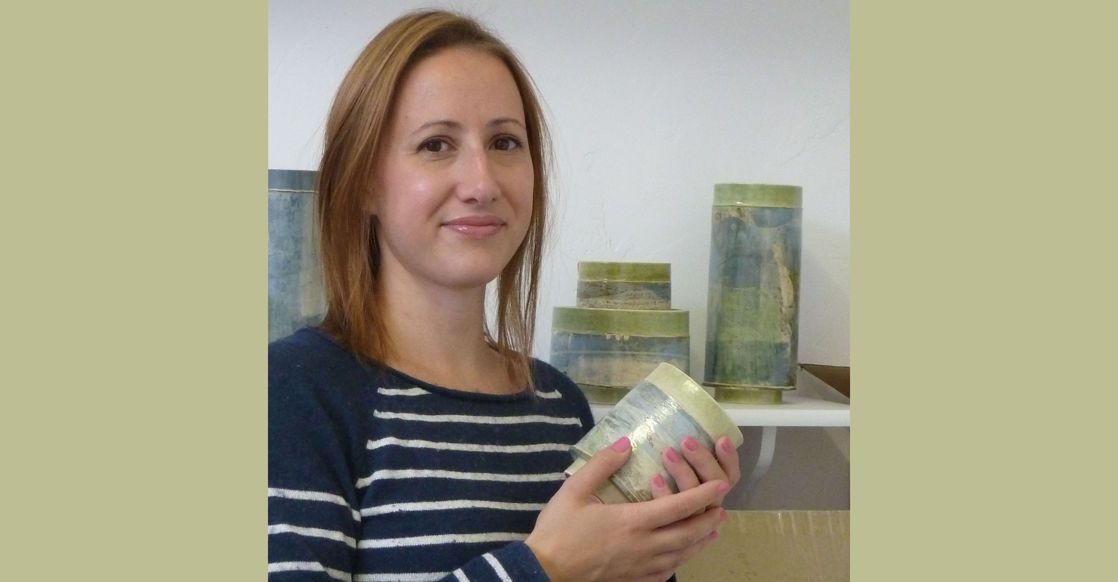
CONTEMPORARY CERAMICS: Why do you do what you do?
EMILY-KRISTE WILCOX: I love working with clay, and I aim for a sense of balance and poise within the vessels that I make. Many of my current collections help to bring elements of the outside world in to the home, whether that’s through the use of colour, creating ‘paintings in clay’ that evoke the landscape or a view across the sea; or indeed the construction of items suitable for plants or fresh flower displays from the garden.
Each stage in the process brings its own joys and challenges – all of which encourage me to investigate further.
The soft clay, wedged and ready to use, is refreshing as it has a sense of positivity that comes with starting a new piece, along with the unknown of what it will become. The stage of developing the layers of surface treatment is an intriguing one. Even though I am often using the same tones, each becomes its own painting and reflects that moment in time. The flick of a paintbrush, the marks made, the tools used, and the surrounding environment all play their part. The sense of intrigue is exaggerated here, as I am often painting with tones of slip which at their raw stage are varying tones of creams and pale pinks, that only become fully developed and apparent as blues/ greys after firing.
The joining and balancing stage, by its nature has sculptural qualities, which feeds the flexibility of form that hand-building provides. The clay itself dictates what can be achieved within a certain timeframe.
Then there’s the final outcome – only after multiple firings, and the magic of the kiln’s heat can the pieces be truly seen as a whole, with their tones fully apparent.
There is so much to explore within this world of clay, and I hope to be able to continue to do just that.
CONTEMPORARY CERAMICS: How did you first get involved with working with clay?
EMILY-KRISTE WILCOX: I followed a course which regularly encouraged us to create pots alongside paintings – to link the two elements together throughout the projects whether that was through a particular theme or technique. This has definitely been something which I have continued to do throughout my practice so far.
I then went on to follow a ceramic degree course where I was introduced to lots of materials, and able to learn a number of different techniques in both construction and surface treatment. This traditional, educational route has given me a wide basis of technical skills, study and understanding before specialising and honing my own direction.
CONTEMPORARY CERAMICS: Are there new pieces or a new direction in your work that will be explored for this display feature? How has your practice changed over time?
EMILY-KRISTE WILCOX: I currently have 4 collections, “Coastal & Lake” “Field & Country” “Garden & Bloom” “Pattern & Surface” with each one remaining individual yet with the ability to balance when grouped as a larger composition.
These collections have been streamlined in form, my appreciation for the history of ceramics and the importance of the vessel has grown over the years. The surfaces of my pots are becoming richer and deeper as a result, the shape being more refined, simplified, perhaps even sharpened in profile?
The vessel form certainly gives a wonderful vehicle for my painterly surface treatment where the overall aesthetic is one of balance. The story or the view travels around the multi-faceted panels with an effortless flow of movement, softly punctuated by a considered coloured seam or join.
In the selection I have made for this showcase, coastal colours feature regularly with strong navy blues or muted tonal combinations of soft blues reminiscent of the sky and sea; others are slightly bolder or with a focus on greenery that may be more representative of those colours you would find across the hills or amongst the garden.
Each of the vessels hold many overlapping characteristics so that they can be easily mixed and matched to create a unique and cohesive grouping.
CONTEMPORARY CERAMICS: How do you work?
EMILY-KRISTE WILCOX: As a specialist in handbuilding I prefer to use a range of flat panels of clay to give me a versatile and flexible element to the construction process. Although a bit of forward planning is often required too!
All of the vessels are slabbuilt using a white earthenware body which is then treated to layers of decorating slip, taking care and consideration of both shape and form whilst simultaneously aiming to achieve the desired depth of surface. Pieces often go through multiple firings and as each is individual, the process of building up the surface varies accordingly.
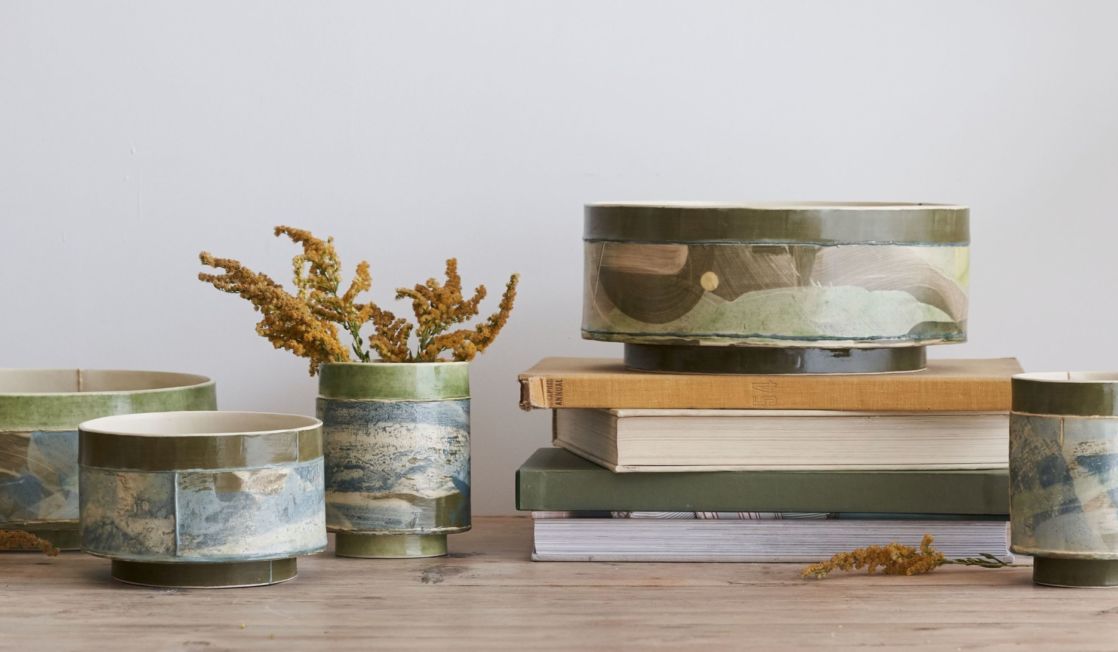
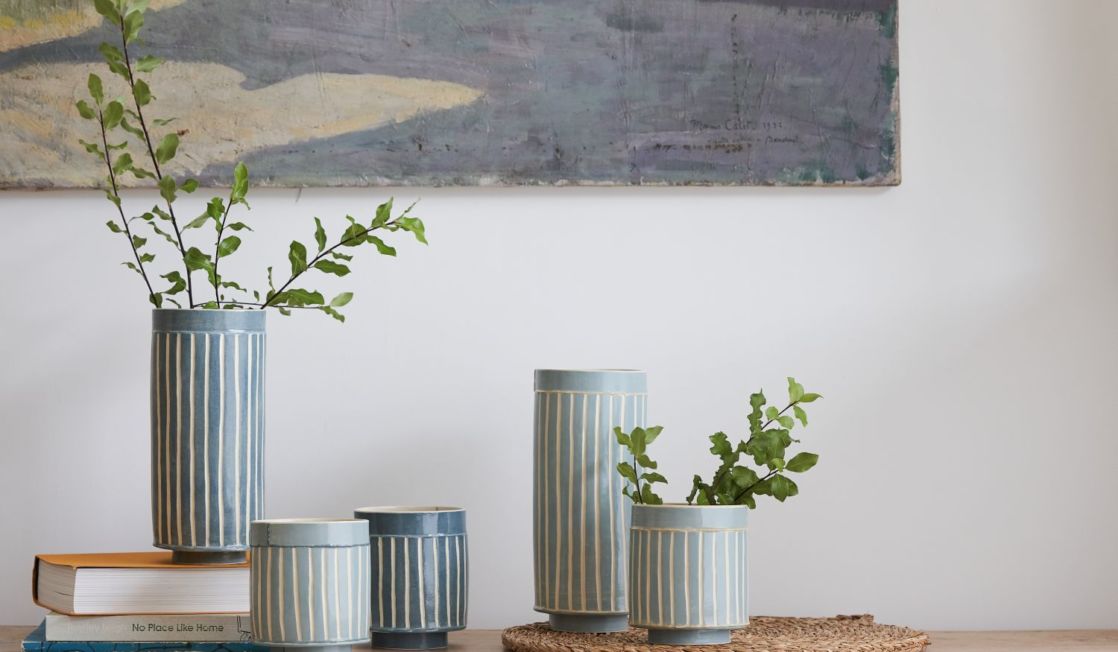
CONTEMPORARY CERAMICS: What images keep you company in the space where you work?
EMILY-KRISTE WILCOX: The workshop is quite limited for space but I do keep a regular pinboard which is the site for notes, reminders, schedules, timeframes, ideas and quick sketches for possible or future products. It also often includes a selection of picture postcards ranging from ceramics, exhibition flyers, interesting museum artefacts, or landscape paintings that hold some sort of interesting markmaking. This board gets regularly reviewed, moved about and updated, but is a bit sparce at the moment due to the circumstances we find ourselves in.
CONTEMPORARY CERAMICS: What was the first piece of art that really mattered to you?
EMILY-KRISTE WILCOX: There have been a number of exhibitions I’ve visited where the sheer scale of paintings are curated in such a way to really make you feel like you are there in the landscape or the seascape. These have notably been Kurt Jackson and Janette Kerr who each have an expressive and dramatic way of markmaking.
The earliest though was probably seeing Degas’ ballerinas. The delicate poise created in the compositions, the ability to capture a fleeting moment yet simultaneously of graceful or powerful movement. These are concepts that continue to influence me and the way in which I create my own work through evoking a wisp of fresh sea air, a sense of wide open space, or a response to a view out of the window.
CONTEMPORARY CERAMICS: What role does the potter/ceramicist have in the 21st century?
EMILY-KRISTE WILCOX: I am increasingly aware of the interest we have in understanding where and why objects are created, the traditions of making, the techniques and processes that are used and the ways we can create our own styles as designers. Developing and maintaining strong levels of craftsmanship within the sector is vital to retain the integrity of ceramics and it’s position within the wider arts world. This can be done through education programmes, workshops and apprenticeship schemes designed to refine techniques and elevate the skill of manual dexterity over the dependence on technology. This is likely to have long lasting effects on the wellbeing of makers and buyers alike.
CONTEMPORARY CERAMICS: How do you hope people experience your ceramics?
EMILY-KRISTE WILCOX: With all of my work I strive to create items which hold an aesthetic function and I have developed my ceramic practice to create pieces that are suitable for interior decor, with an emphasis on bringing elements of the outside world into the home.
As previously mentioned, coastal colours feature regularly with strong navy blues or muted tonal combinations of soft blues reminiscent of the sky and sea; others are slightly bolder or with a focus on greenery that may be more representative of those colours you would find across the hills or amongst the garden.
I tend to give these vessels an all over coverage of glaze for both practical and aesthetic reasons. The coloured slips are enhanced through this process with some becoming quite bold when compared to both the creamy tones when wet, and the dry chalky tones of the bisqueware stage. I am able to build rich layered surfaces this way and create a sense of depth that results in many of the pieces holding little views to the outside world.
All of this I aim to do whilst keeping a sensitivity to the earlier brushmarks and construction techniques.
Oh, and for the more practical amongst you, the glazing means these pots will each hold water – perfect for housing a pot plant or a display of fresh blooms from the garden (plus they are fairly easy to keep clean!)
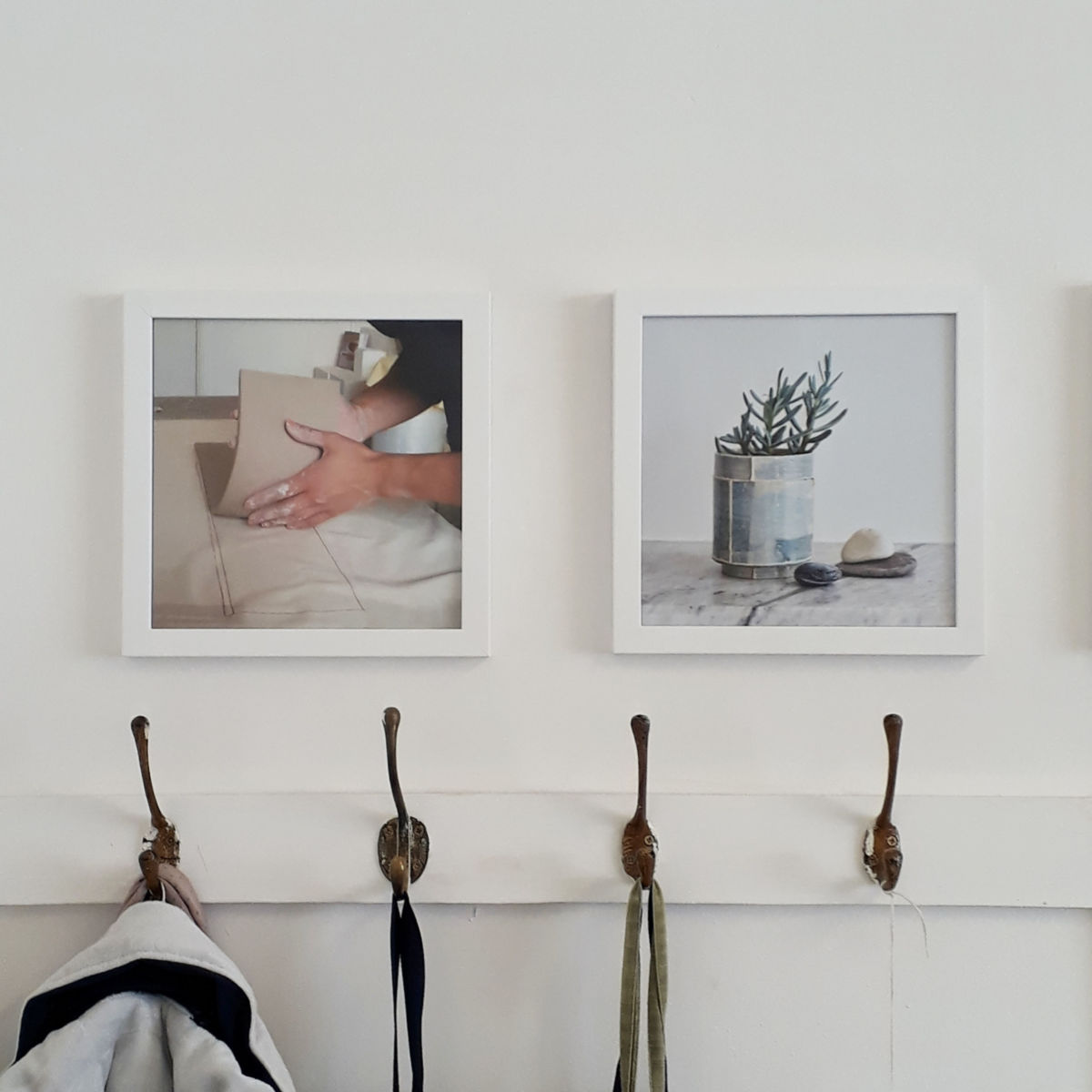
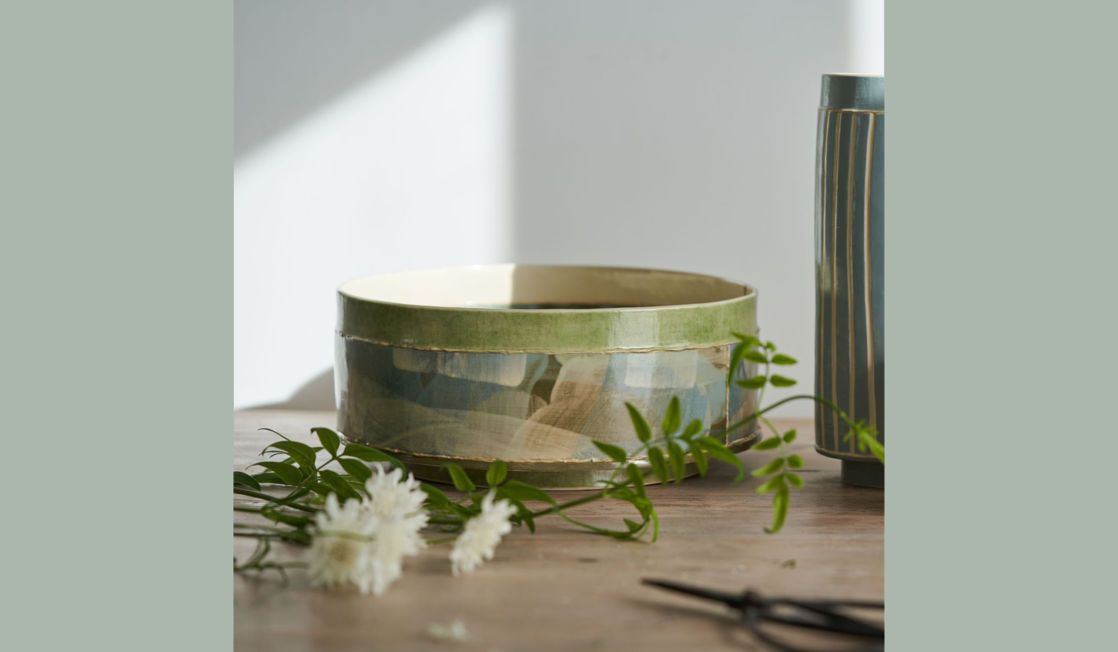
CONTEMPORARY CERAMICS: How does working with clay influence your life beyond the workshop?
EMILY-KRISTE WILCOX: I don’t switch off! There’s always something to do when you’re working for yourself. Aside from the juggling of tasks to keep track of, I can be taking a walk and something within the hedgerows or the view across the hills may catch my eye and spark a thought. It could be a particular colour combination for example, or a view across the sea whilst on holiday. The very nature of being outside and away from the familiar surroundings of the workshop can often help to clarify thoughts so that I can see what the next steps to take are.
And on that note, I’m off to the garden…